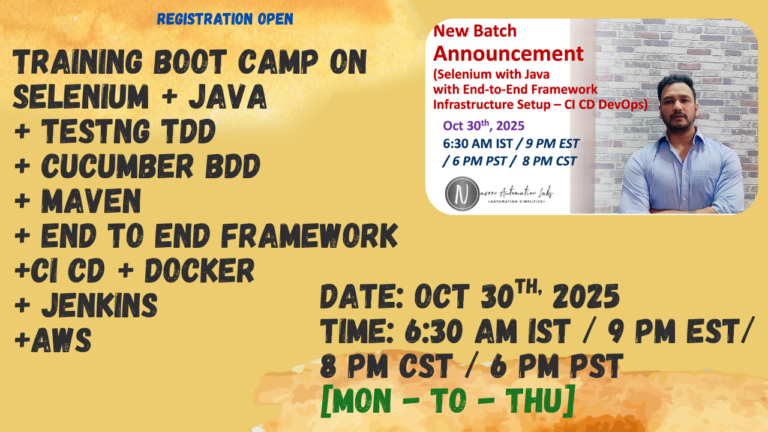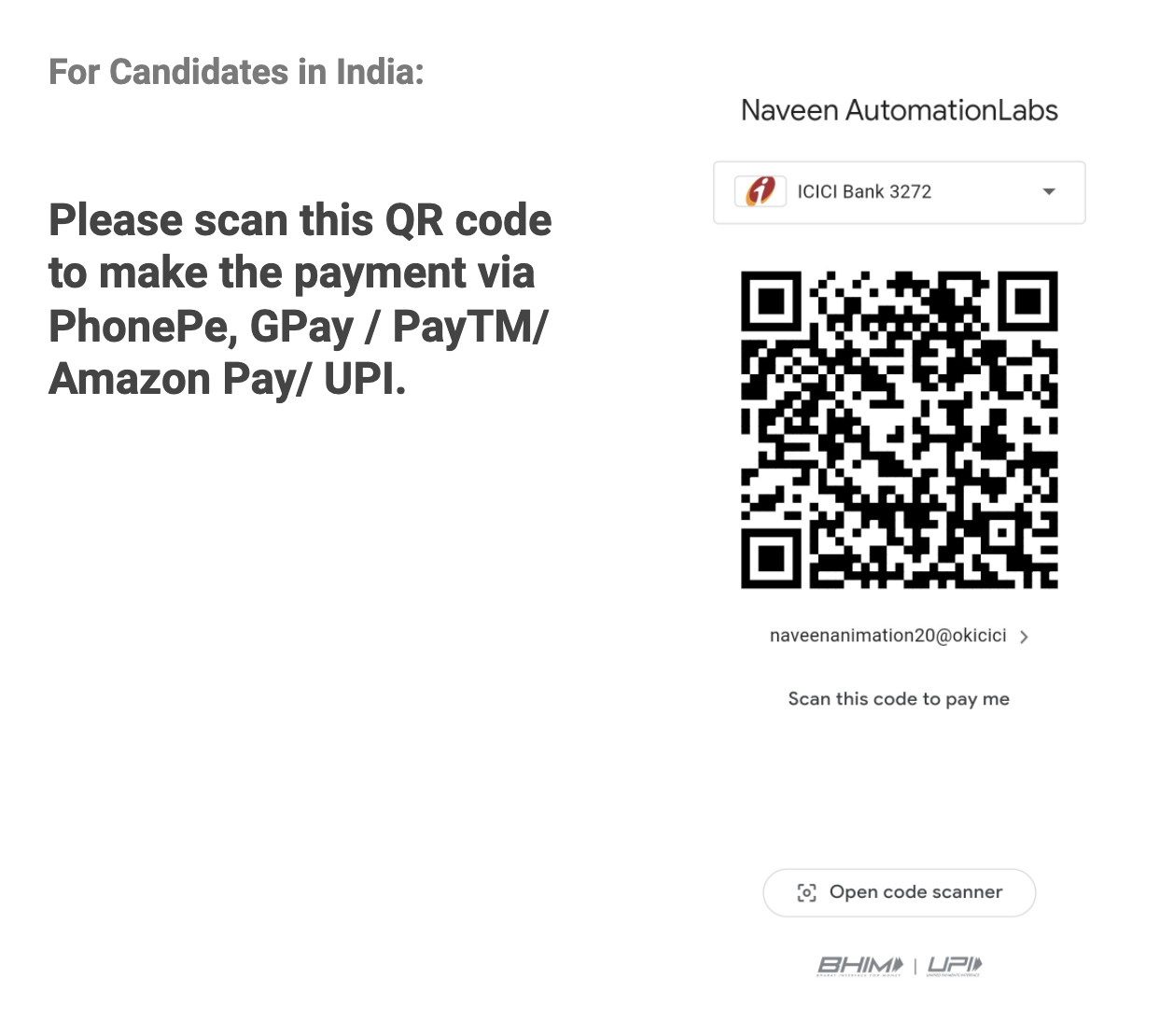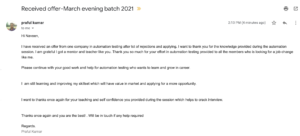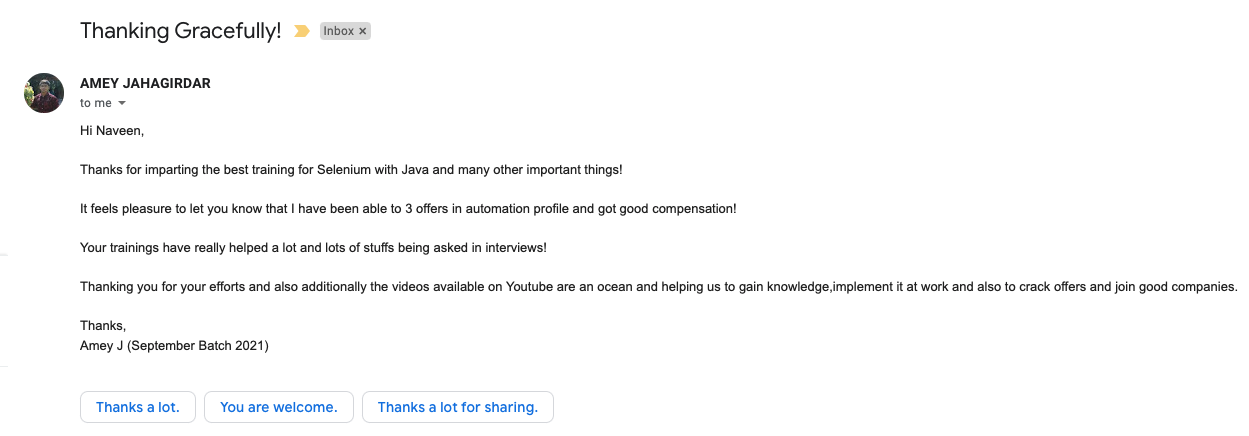1. Payment link using secured stripe:
Pay by Credit/Debit Card:
If you want to use credit card/debit card, please use this secured stripe payment link:
2. Bank Transfer:
Please find below bank details. You can make the transaction directly to the given account or make it via Western Union (only via bank transfer) / Xoom/Remitly or any other remittance.
Bank Details:
Name: Naveen Khunteta
Bank Account Number: 1015794367401
IBAN Number: AE520260001015794367401
City/Country: Dubai, UAE
Swift Code: EBILAEAD
Address: Staybridge, DIFC, Dubai (UAE) – 500001
Note: If you are paying through PayPal, You need to pay 330 USD (10 USD will be the PayPal Fee).
Imp Note:
- There will be 2 demo sessions. In case If you don’t want to proceed with the training. Full Registration amount will be refunded back to you after 2 demo sessions.
- Candidate has to inform immediately after two demo sessions via email (in case of refund, else refund won’t be possible).
- After 2 demo sessions, pending amount must be paid.
- Zoom Meeting link and password will be shared to join the session before the session everyday.
Course Content:
Selenium WebDriver is a leading web automation testing tool in industry. It is one of the most popular tool. Selenium WebDriver jobs are on a rise and are highly paid and highly valued. Industry is shifting towards automation rapidly.
Today, every start up, product based and service based companies need Automation QA Engineer to automate their web apps.
With more and more applications becoming accessible through browser it becomes very important to learn Selenium WebDriver.
This course is designed to teach in depth concepts of Selenium WebDriver4.x and Java. We focus on the basics first and then move towards the advance concepts of Selenium, Java and framework development.
Note: This training will be covered with latest Selenium 4.x version.
Part -1: Basics of Java & Selenium
1) Automation : A brief introduction to automation and the need for automation. How automation will enable you to beat competition and make you get the better jobs in market.
• What is Automation Testing
• Use of automation Testing
• Tools for Automation Testing
• Why automation is important for you career?
• What is Selenium
• Advantage of Selenium
• Introduction to WebDriver
2) Core Java/Programming : This class will set you up for understanding Basic OOPs and java concepts. These concepts will be extremely important for you to become a good Automation tester. This section is specially designed so that can be followed by any Manual test very easily.
- Data Types and Variables
- String Class
- Arithmetic Operators & Concatenation operators
- Conditional & Decision Making
- Single Dimensional Array
- Loops (For, While)
- Classes and Objects
- Class Constructors
- Functions in Java
- Function Input Parameters
- Function Return Types
- Exception Handling
- Inheritance
- Polymorphism
- Encapsulation
- Data Hiding
- Method Overloading
- Method Overriding
- Abstract class
- Interface
- Super/This Keywords
- Final/Finally/Finalize Keywords
- Concept of Garbage Collector and System.gc
- Wrapper Classes
- String Manipulation
- Collections Basics (Array List, HashMap, Set, Hashtable)
3) Eclipse IDE : This topic might seem little off place here but it’s very important topic to understand the tool you are using. Eclipse will the primary choice of development environment and we will discuss features of eclipse here.
• How to use Eclipse
• How to run, stop, pause
• How to debug in Eclipse
• Understanding console output
• How to put a break point
• How to add Watch variables
• How to find errors from Problem window
• Usage of step into and Step over debug functionality
4) Set up Eclipse : We will start with setting up WebDriver, so that every participant start flaunting off their newly learnt skills by writing some cool test programs:
• Download and install java
• Download and start Eclipse
• Download and configure WebDriver java client
• Set up a project
• Create packages
• Create a First Java test case
• Import WebDriver Source file
Note: This training will be covered with latest Selenium 4.x version.
5) WebDriver Interface : This topic will make you familiar with the concept of browsers in WebDriver and how to launch basic Firefox browser using WebDriver. Here we will also talk about WebDriver & WebElement interface which will enable us to answer many complicated Interview Questions about WebDriver Implementation.
• Architecture of WebDriver
• WebDriver Interface
• WebElement Interface
• Launching Firefox/Chrome/Safari
6) Browser & Navigation Commands : This is something which everybody do very first thing when they learn Selenium. Opening & closing of browser and some navigation function on top of it.
• How to Open a URL
• Verify Page title
• Strategy to get the Page Source
• Difference between Close & Quit
• Ways to Navigate Back & Forward
• How to Refresh Page
• Another way of Navigating to specific Page
7) WebElement Commands : An important and basic need of Selenium Automation. This part enables every participant to start writing automation test in their organizations. These are the most commonly used operations on any website.
• Difference between FindElement & FindElements
• Enter & Clear text from Input field
• How Click action works differently on different elements
• Managing Input fields, Buttons & Links
• Finding all links on the Page
• Extracting More than one object from a page
• Extracting Objects from a specific area of a web page
• Check if element is Present, Displayed, Enabled or Selected
8) Locators : In this class we will start learning about HTML, how elements are defined inside HTML document and what are the different attributes that are associated with an HTML element. We also try to find elements based on its attribute values.
• What are locators
• HTML Basics
• HTML language tags and attributes
• ID, Name, Xpath, CSS etc
• Difference between Absolute & Complete Xpath
• Finding your first element
• WebElement Commands
9) Element Identification : This part explains the lifesaver Add-Ons & tools for Selenium. Finding elements are the most common activity carried out in Selenium. These tools give us power to easily identify complex elements and help us in saving lot of time.
• Element Inspector in Mozilla, Chrome and IE
• Element locator tool for FF
• Various HTML locator strategies
• XPath Helper Plug-in for Chrome
• Selection of Effective XPath
• Handling Dynamic objects/ids on the page
10) Tables, Checkboxes & Radio buttons : Many applications involve use of web tables and list boxes. These skills will help participant to get the expertise on complex tables structures and write effective automation test.
• Identify table rows and columns
• Extracting values from a cell
• Dynamically Identify Tables Data
• Select class in Selenium
• Drop Down Handle
• Select multiple values from the list
• Select & Deselect operations by Index, Value & Visible Text
11) Selenium Waits, Alert & Switch Windows : A little complexity will start now onwards. To use Waits effective is very important for every automation tester. Wait helps us in switching windows, handling pop-ups, operating alerts correctly.
• Implicit and Explicit waits
• How to use Expected Conditions with Waits
• PageLoadTimeout & SetScriptTimeout property
• Simple use of Thread Sleep
• Concept of Fluent Wait in Selenium
• Strategy to poll for an object
• WebDriverWait and its uses
• Different WaitUntil Conditions
• Managing Ajax based components
• Ways to handle Simple, Confirmation & Prompt Alert
• Concepts of Set Interface in Java
• Difference between Window Handle & Handles
• Switching & Closing Windows, Tabs & PopUps
• Concept of window ID
• Extracting window IDs with Selenium Object reference
12) Actions Class
This gives us power on recently build Application with latest and complex object features. Hovering mouse or simulate Mouse and Keyword operations can be done by using Action Class. A necessary thing to learn in Selenium journey.
• What is Action Class & What can we do with Action Class
• Mouse Hover & Mouse Movement with Action
• Drag and Drop Action
- Right Click (Context click
- Click and SendKeys using Actions Class
- Interview Questions
13) Browser Profile: Different types of browser profiles and user authentication models with examples will be discussed in this class. You will need these to test secured websites and user authenticated websites.
• What is Browser Profile
• How to set up ChromeOptions and Firefox Options










